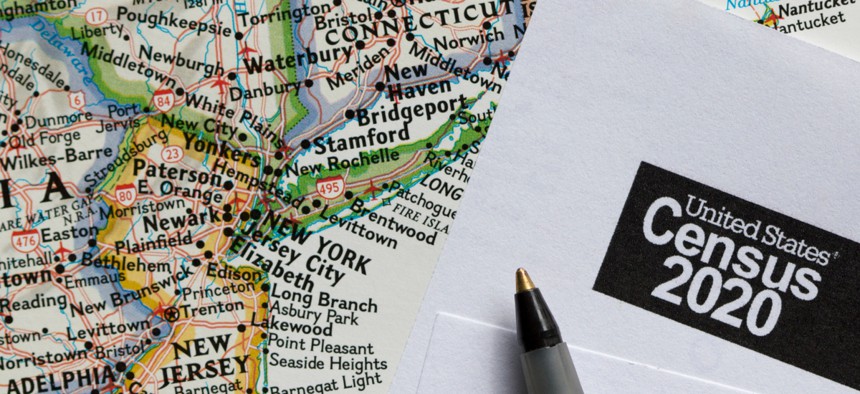One Month Out, Watchdog Warns About Census IT and Cybersecurity Challenges

Tada Images/Shutterstock.com
The Census Bureau this month switched the internet response system that respondents will use to complete the 2020 census questionnaire. The last-minute change worries the Government Accountability Office.
It’s less than a month until the federal government will start asking households across the country to complete the 2020 census questionnaire. But the Census Bureau is behind addressing IT and cybersecurity issues that could put the decennial survey at risk, according to a government watchdog report.
For the first time, the 2020 census will primarily rely on online responses rather than paper surveys. But the new technology supporting the effort brings new potential security risks.
Officials with the Government Accountability Office, which authored the report, laid out some of their security concerns last week during a congressional hearing.
The Census Bureau recently discovered that one of its systems designed to receive participants’ online survey responses was not able to handle 600,000 users at one time without experiencing performance issues. As a result of the detected issues, the bureau this month opted to switch to a backup system that could handle that many users.
“Late design changes, such as the shift from one system to another, can introduce new risks during a critical moment,” said Nick Marinos, the GAO’s director of information technology and cybersecurity, told the House Oversight and Reform Committee. “The bureau needs to quickly ensure the system is ready and that contingency plans are finalized to reflect this change and fully tested before going live.”
Census Director Steven Dillingham said the system was designed to simultaneously handle far more users than were expected to log on but that the change was made to provide a better interface and experience for users.
“All indications are we are ready for it,” Dillingham said at last week’s oversight hearing.
Underscoring the importance of cybersecurity during this year’s census because of the online response option, the GAO report also highlighted the need of the bureau to improve its ability to track implementation of cybersecurity recommendations. Further, the report said the bureau needs to and to finalize its contingency plans to respond to any incidents that could affect the online response system.
The 2020 Census will be crucial in determining how hundreds of billions of federal dollars in about 300 programs are divided among states and localities in the years ahead, including those that provide money for highway construction, food stamps and health care for the elderly and the poor. An undercount of just 1% of the population could have dramatic implications for state coffers.
Part of the Census Bureau’s strategy to ensure traditionally hard-to-count communities are counted involves partnering with local leaders, nonprofits, and businesses to encourage participation. But even as the census count has already gotten underway in Alaska, where many indigenous communities are considered hard-to-count, the bureau has not met its goals for establishing these community partnerships.
The Census Bureau expected to have 300,000 community partners by March. However, as of early February, the GAO report notes that the bureau is short by about 60,000 partnerships. The report noted, however, that the bureau was pleased with the quality of the community partner relationships that had been established thus far.
Rep. Carolyn Maloney, a Democrat and the chairwoman of the House Oversight and Reform Committee, asked GAO officials about the importance of community partnerships and what impact a lack of partnerships could have on the count.
“We need people to be encouraged to participate in the census… and believe in the integrity of the data,” said Christopher Mihm, GAO’s managing director of strategic issues. “That is what partnerships can do, they are trusted voices in the community.”
The bureau has also lagged at meeting its recruiting goals for the temporary staff needed to go door-to-door as part of the census count.
As of February 3, the bureau had recruited 2.1 million applicants of its 2.5 million target.
“If the bureau does not recruit sufficient applicants, it may have difficulty hiring enough staff to complete its upcoming operations within its scheduled time frames, which could delay subsequent operations, add to costs, and adversely impact data quality,” the GAO report said.
But Dillingham responded that when it came to hiring efforts and community partnerships, the Census Bureau “set very ambitious goals” in order to prepare for worst case scenarios.
“We are going to exceed our goals,” he said.


